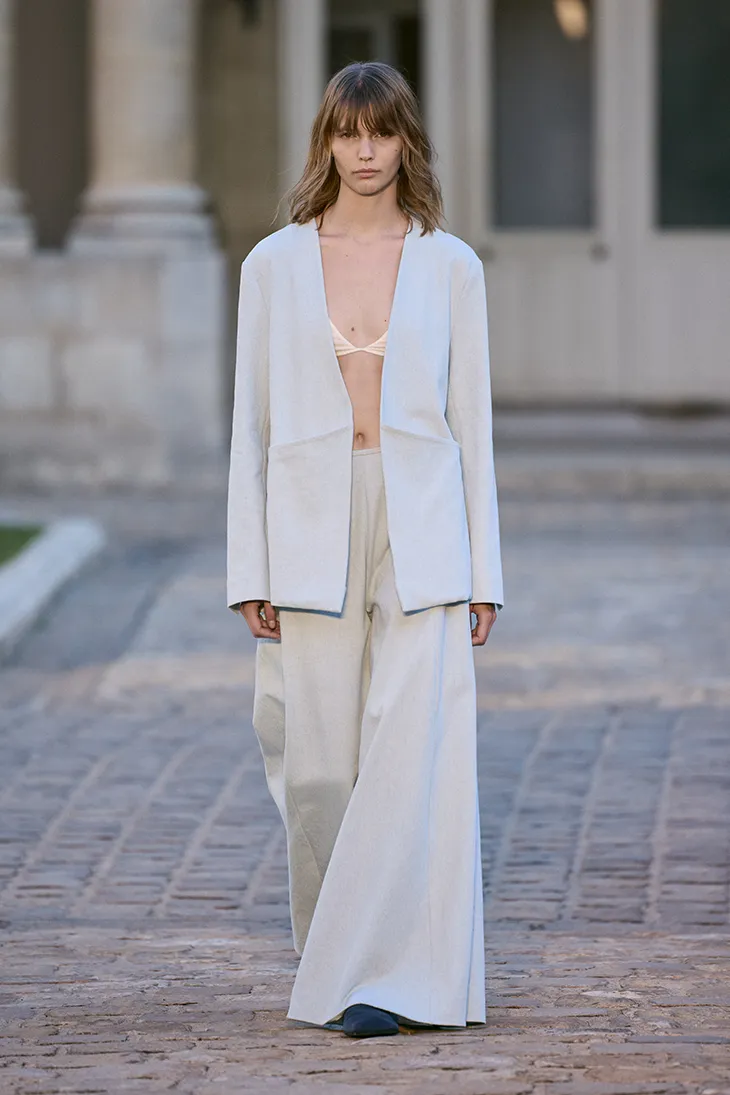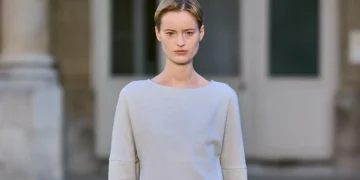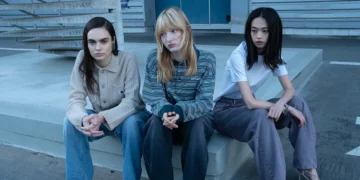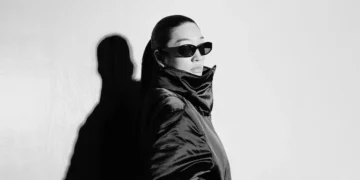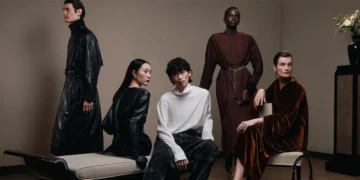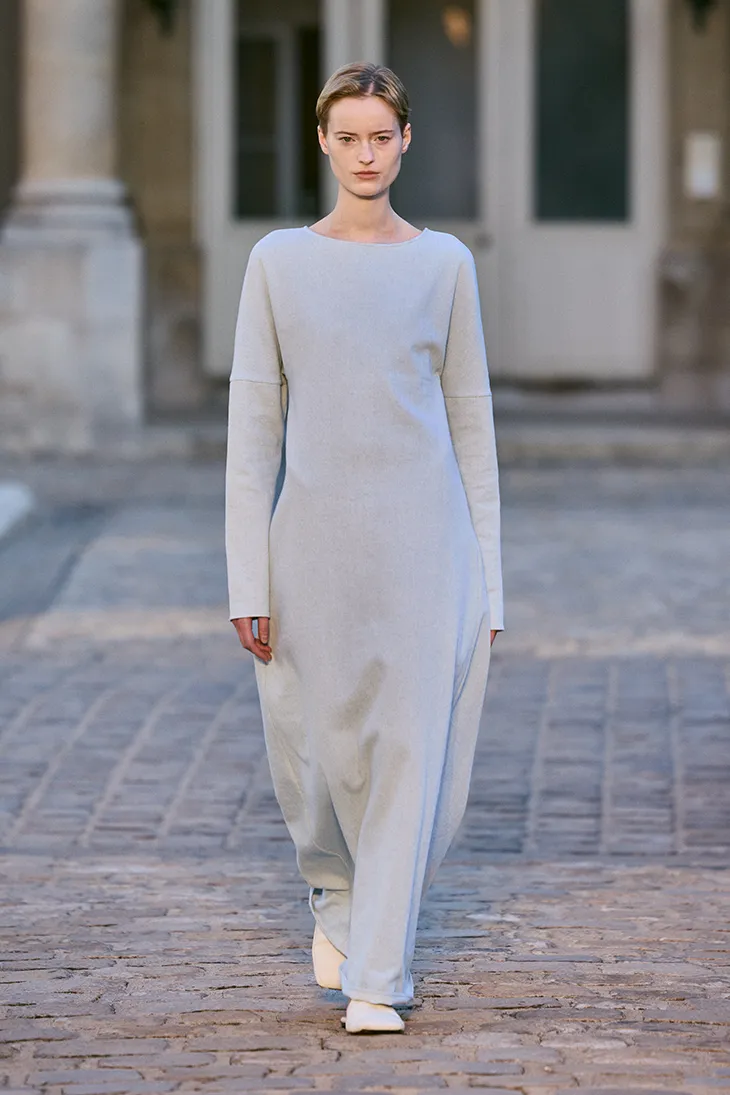
RUOHAN introduced its Spring Summer 2026 collection Passing Shadow, Long Afternoon, the second chapter of the label’s Four Seasons series. The collection investigates rhythm and the ephemeral qualities of light, presenting garments as both sensory memory and physical form.
The collection builds from the idea of summer as a series of weightless intervals rather than destinations. Designer Ruohan Nie recalled fragments of experience: an island’s outline, a shimmer of water, or books forgotten in the heat. These impressions shaped a wardrobe designed to capture passing instants rather than fixed narratives.
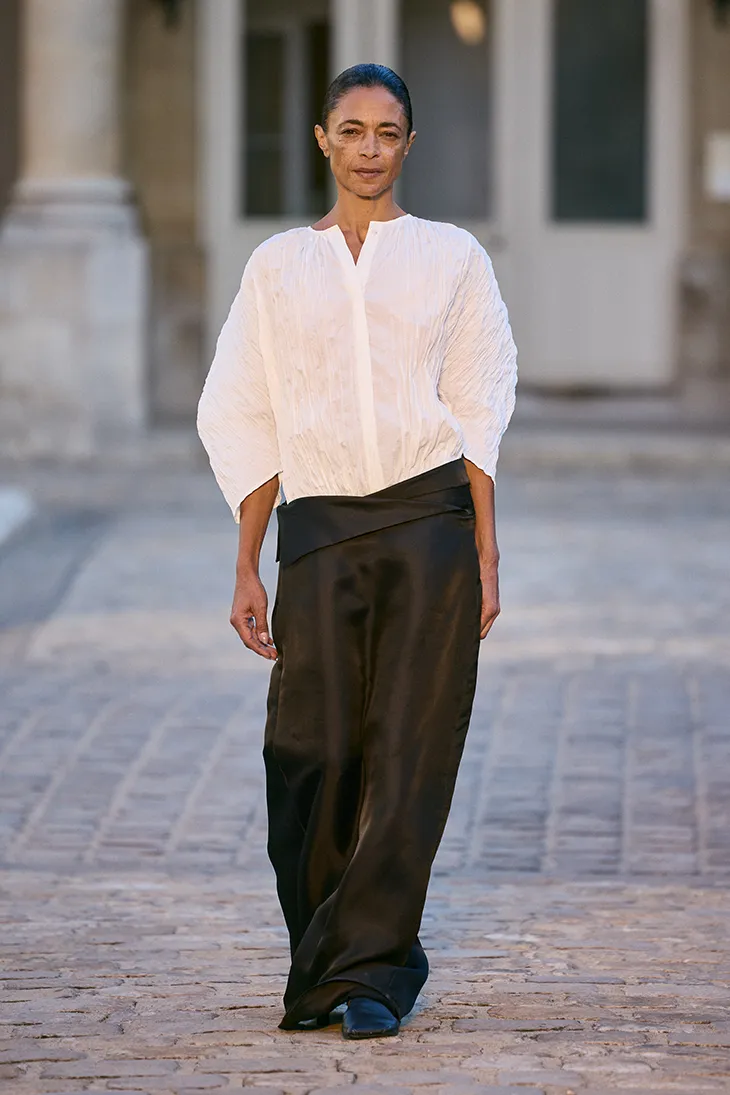
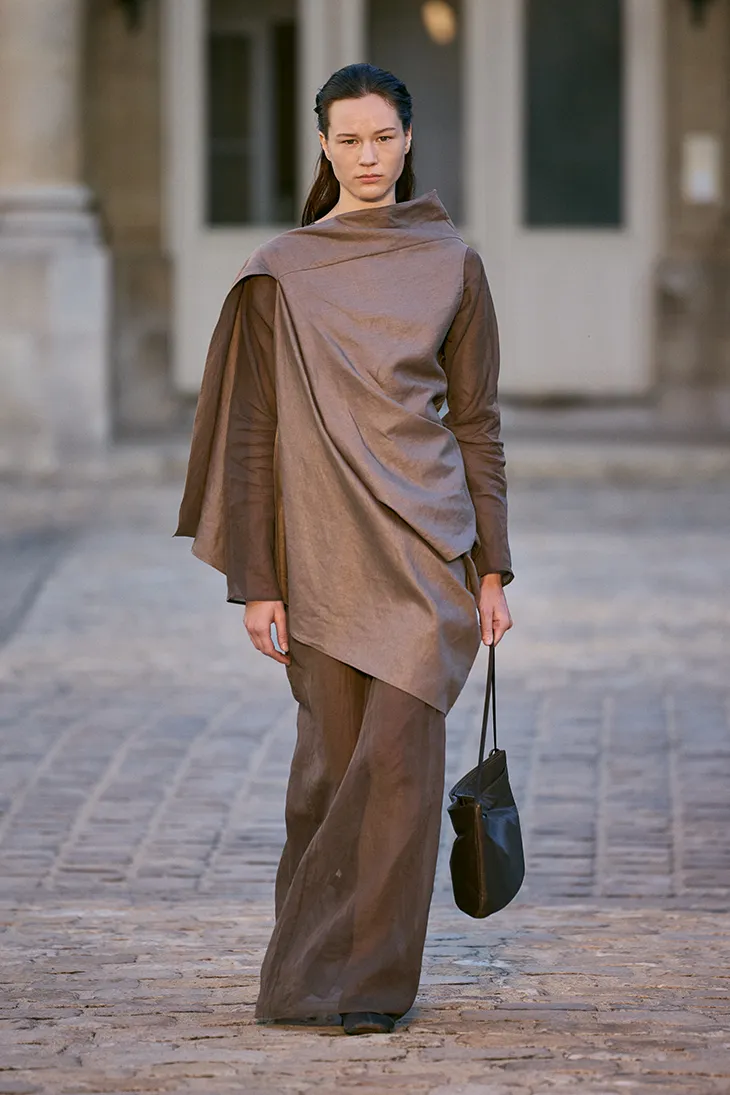
Shadows informed both the concept and the construction of the garments. They appear not as fragments but as complete entities that dismantle and reform. GAC-coated silk satin organza echoed this duality, creating shells that protect while carrying associations of escape and absence. The fabric moved like a record of transition, its surface balancing loss and renewal.
Rhythm provided another structural element. Inspired by Carl Andre’s POEMS, Nie treated words, lines, and repetition as invisible scaffolds. The show incorporated terms such as HOPE, INSPIRE, AWAIT, and CONTEMPLATE, set in motion as if they were a music-box strip. In this framework, garments translated rhythm into visible patterning, extending the experience of repetition into songlike form.
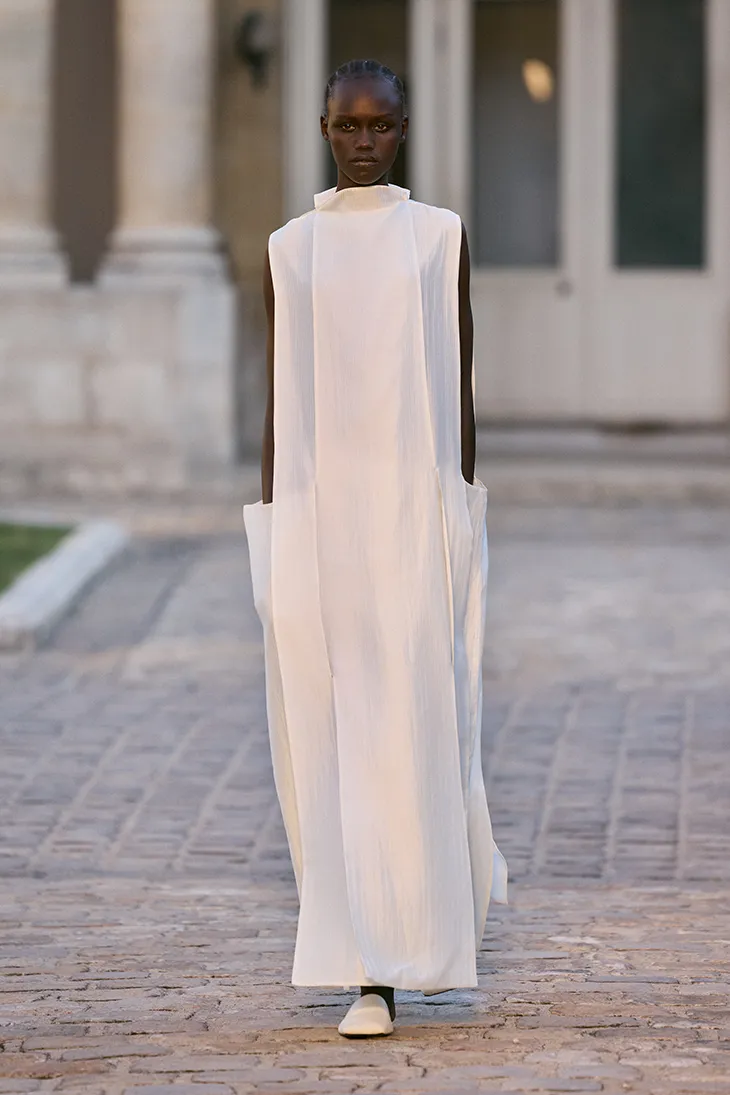
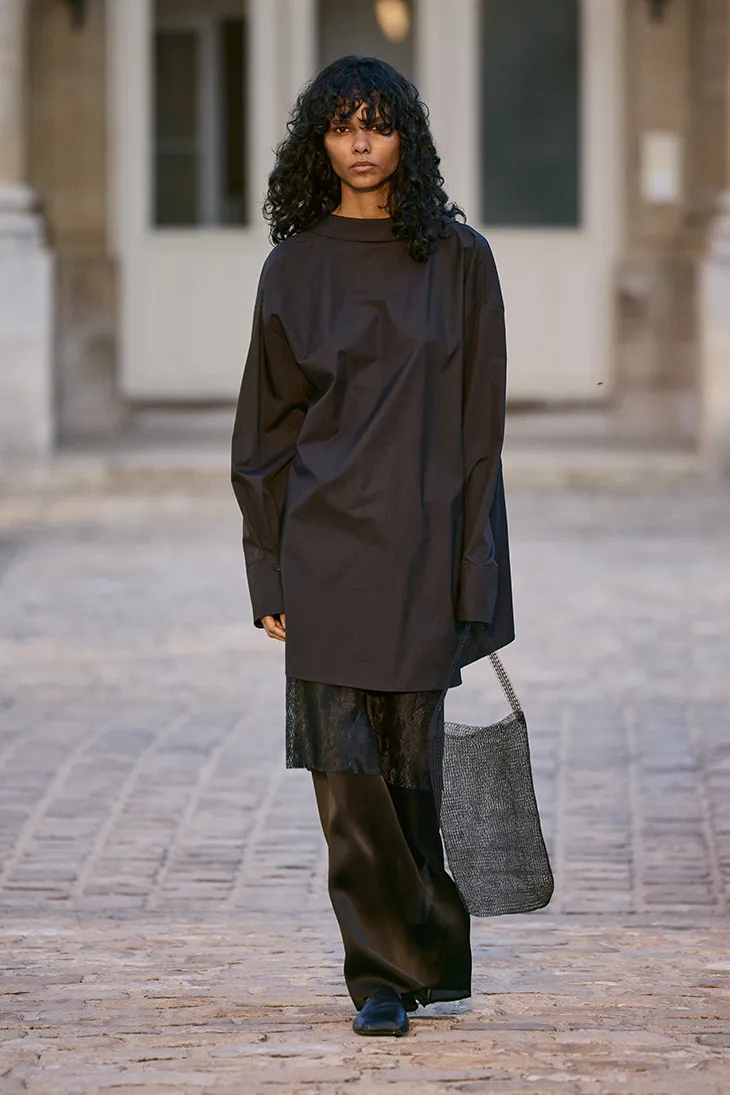
The collection was unveiled at the National Archive museum in Paris, a site Nie personally visits during warm seasons. She described walking through the gate to a concealed garden where time seems suspended. That place of retreat, which she calls her “zoning ground,” became central to the mood of the season. The show echoed that sensation of silence and altered time, with clothes shaped to hold the stillness of the garden and the movement of shifting air.
Materials played an essential role in building this rhythm. Waxed cupro carried a sense of distance, cotton voile dissolved into near-invisible transparency, and coated linen shimmered like memory newly burnished. Silk caught fleeting light at dusk, while cashmere mohair and silk, stitched in floating lines, turned static surfaces into moving rhythms. Color choices followed the sky’s progression from late afternoon into night, layering blues, violets, and shaded greens into an atmospheric palette.
RUOHAN’s Spring Summer 2026 chapter constructed a summer symphony from rhythm, light, and passing memory. It examined what vanishes and what lingers, creating garments that move with the intangible patterns of shadow and song.
